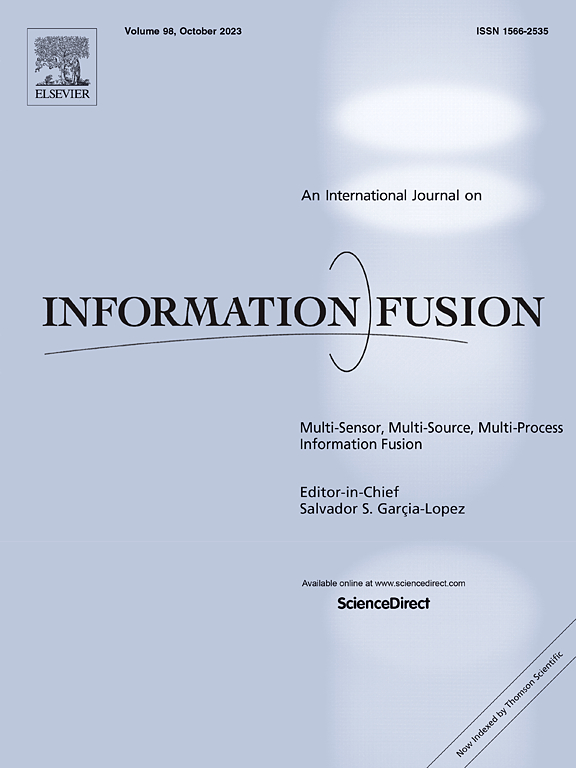Pred-ID:基于图归纳和演绎的事件类型模式挖掘的未来事件预测
IF 14.7
1区 计算机科学
Q1 COMPUTER SCIENCE, ARTIFICIAL INTELLIGENCE
引用次数: 0
摘要
在信息管理领域,有效的事件智能管理对其发展至关重要。随着事件的不断演变,预测未来事件已成为信息管理中的一项关键任务。事件预测旨在根据给定的上下文信息预测即将发生的事件。这需要对事件及其在上下文中的关系进行建模,以推断未来事件的结构。然而,现有的事件预测方法忽略了基于核心事件的事件图模式可以通过归纳和演绎为事件预测提供更多关于历史和未来的知识,从而实现准确的事件预测。为了解决这个问题,我们将重点放在了事件模式归纳上。受此启发,我们提出了Pred-ID模型,旨在通过归纳事件图生成、演绎事件图展开和图融合来构建事件演化模式,用于事件预测。具体而言,在归纳事件图生成阶段,Pred-ID从实例事件图中提取事件核心子图和事件发展趋势,学习全局结构,揭示事件发展的主要过程。然后,在演绎事件图展开阶段,Pred-ID通过展开未来事件节点,将事件发展的主要过程向未来方向延伸,得到演绎结果,从而构建事件演化模式。最后,在事件预测的图融合阶段,将事件进化模式与实例事件图对齐和合并,从而实现对未来事件的协作预测。实验结果表明,本文提出的Pred-ID在事件演化模式生成和事件预测任务中取得了最优的性能。本文章由计算机程序翻译,如有差异,请以英文原文为准。
Pred-ID: Future event prediction based on event type schema mining by graph induction and deduction
In the field of information management, effective event intelligence management is crucial for its development. With the continuous evolution of events, predicting future events has become a key task in information management. Event Prediction aims to predict upcoming events based on given contextual information. This requires modeling events and their relationships in the context to infer the structure of future events. However, the existing event prediction methods ignore that the event graph schema based on core events can provide more knowledge about history and future for event prediction through induction and deduction, so as to achieve accurate event prediction. In addressing this issue, we directed our focus towards Event Schema Induction. Inspired by it, we propose the Pred-ID model, designed to build event evolutionary pattern through Inductive Event Graph Generation, Deductive Event Graph Expansion, and Graph Fusion for Event Prediction. Specifically, in the Inductive Event Graph Generation phase, Pred-ID extracts the event core subgraph and event developmental trends from the instance event graph, learning the global structure and uncovering the main processes of event development. Then, in the Deductive Event Graph Expansion phase, by expanding future event node and stretching the main processes of event development into future directions, Pred-ID obtains deductive results, so as to construct the event evolutionary pattern. Finally, in the Graph Fusion for Event Prediction phase, aligning and merging the event evolutionary pattern with the instance event graph enables collaborative prediction of future events. The experimental results indicate that our proposed Pred-ID achieves optimal performance in event evolutionary pattern generation and event prediction tasks.
求助全文
通过发布文献求助,成功后即可免费获取论文全文。
去求助
来源期刊

Information Fusion
工程技术-计算机:理论方法
CiteScore
33.20
自引率
4.30%
发文量
161
审稿时长
7.9 months
期刊介绍:
Information Fusion serves as a central platform for showcasing advancements in multi-sensor, multi-source, multi-process information fusion, fostering collaboration among diverse disciplines driving its progress. It is the leading outlet for sharing research and development in this field, focusing on architectures, algorithms, and applications. Papers dealing with fundamental theoretical analyses as well as those demonstrating their application to real-world problems will be welcome.
 求助内容:
求助内容: 应助结果提醒方式:
应助结果提醒方式:


